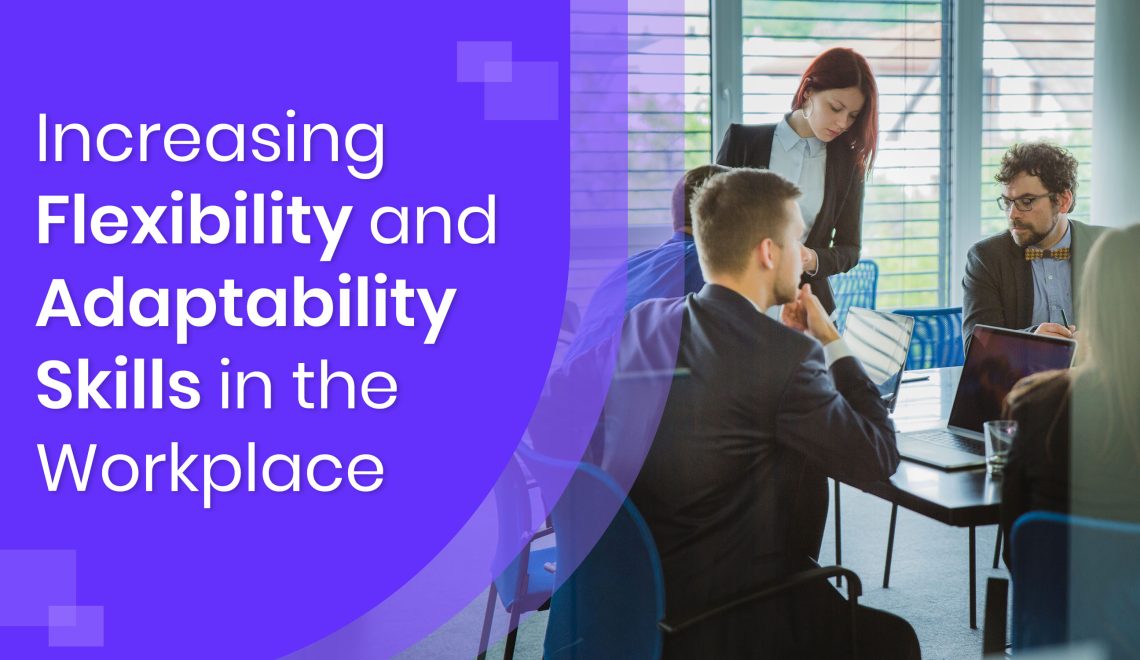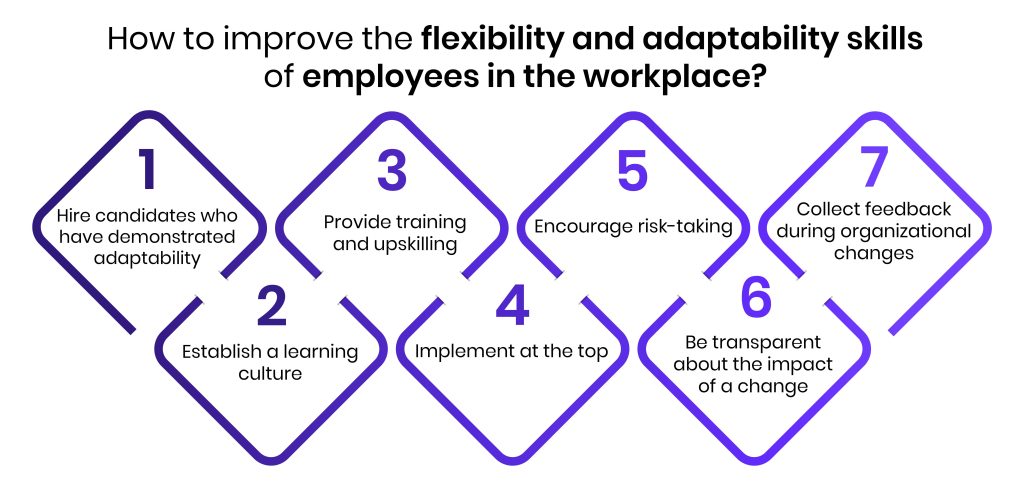
The flexibility and adaptability skills of employees ensure that the organization stays relevant and rises above challenges. Keep reading to learn about methods to improve the adaptability of the workforce.
The business world is always in a state of constant change. There is never a predictable pattern involved and the parameters such as market dynamics, regulations, population, technology, and consumer tastes are always in a state of flux. Only those who are flexible, willing to learn, and adapt can meet the challenges of the dynamic business landscape and sustain themselves in the long run. Hence, it is essential for organizations to have onboard an adaptable workforce at all levels for meeting the challenges of accelerated growth.
A highly adaptable workforce promotes the productivity of the organization. They are willing to continually develop and live up to their maximum potential. However, adaptability is more than just being flexible. It is more about being willing to step outside the comfort zone and embracing new concepts without any preconceived notions. Building an adaptable workforce requires conscious effort from the leadership to establish an environment where learning, innovation, and experimentation are encouraged.
What is adaptability?

Adaptability refers to the extent to which a person can accommodate changes. In the context of an organization, it relates to the ability of the employees to change their attitude and understanding to conform to changing situations. When employees are adaptable to changes, the organization can quickly meet the industry challenges and ensure continuity of work during sudden disruptions.
While hiring new employees, organizations are looking for adaptability as a critical skill and even including it in job descriptions. Adaptable employees can respond effectively to unplanned events and resolve tough issues by collaborating with others. Leaders, in particular, must develop adaptability skills for performing effectively in changing circumstances and motivating others to follow suit.
How to improve the flexibility and adaptability skills of employees in the workplace?

Although adaptability is part of an individual’s character, there are many steps an organization can take to improve the level of its workforce adaptability.
● Hire candidates who have demonstrated adaptability
Screening the candidates during the recruitment process is an ideal technique to ensure that the workforce is filled with adaptable employees. The interviewer can frame questions to dig more into the candidate’s past performance and how he reacted to industry changes. Ask for specific examples where they have responded effectively to a setback or mastered a new skill. A few important types of adaptability skills you can look for in candidates are interpersonal skills, problem-solving skills, communication skills, teamwork skills, and organizational skills.
● Establish a learning culture
Continuous learning is integral to developing new skills and improving performance. Encourage a learning culture in the organization so that employees are willing to experiment and come up with innovative ideas. Failure should not be reprimanded. Instead, employees must understand that the leadership is open to trying out new ideas and learning from mistakes. When people are ready to come out of their comfort zone, they should be recognized and rewarded for encouraging them.
● Provide training and upskilling
Learning and updating the skills will support the employees to take up challenging projects and cope with uncertainties of the new situations. They would respond well to changes since they are equipped with the skills and knowledge to handle the new processes.
● Implement at the top
Flexibility and adaptability have to begin from the leadership as it motivates the employees to follow the example. Leaders have to continuously innovate and showcase instances where they have accepted or implemented new ideas. When leaders are willing to respond to change quickly, it reflects in the team as well.
● Encourage risk-taking
Taking risks is essential for bringing new ideas to the organization. Sticking to safe and established routes will stifle creativity and limit the adaptability of the workforce. Employees must be motivated to take reasonable risks after thoroughly assessing the impact.
● Be transparent about the impact of a change
Employees resist change when they do not understand the reason why the change is required. Clear communication with the employees will help them learn about the need for various changes and how they will help the organization grow. When they appreciate the positive effects of a new strategy they are likely to welcome it rather than resist.
● Collect feedback during organizational changes
When changes are introduced in an organization it creates apprehension among employees resulting in a hostile attitude towards the new policies. Communicate to them clearly that they can give suggestions about the policies anytime and bring their concerns to the notice of the management. This will give the leadership a better picture of the impact of the change and determine the troubles faced by employees. They can arrange for additional training to help employees cope with the new measures.
Final thoughts
Changes happen always and an organization can continue its performance within the industry only with an adaptable workforce. It is essential to create teams that embrace changes quickly and are capable of steering the organization out of sudden disruptions. An adaptable workforce could be the prime mover behind the success or failure of an organization in the fast-paced business world.
Follow me on LinkedIn
FAQ
What are examples of flexibility and adaptability at work?
Being open to innovative ideas and the willingness to change the approach to work if required are examples of flexibility and adaptability skills at work.
What are skills for flexibility?
Broadening one’s perspective and being open to change are skills for flexibility.
What are the 6 common flexibility techniques?
Transparent communication, building trust, providing more control to employees, flexible work hours, improved rewards and recognition, and valuing employee feedback are the 6 common flexibility techniques.



